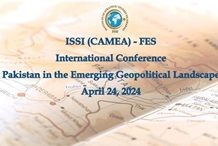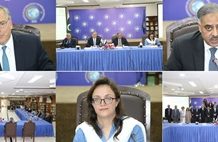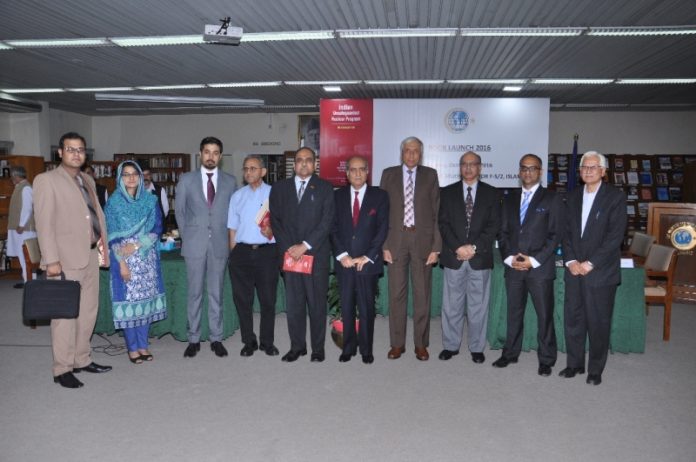Press Release
Book Launch of “ Indian Unsafeguarded Nuclear Program: An Assessment”
Institute of Strategic Studies, Islamabad
October 24, 2016
A groundbreaking research study reveals that India already has sufficient material and technical capacity to make 356 to 492 nuclear bombs. This work is in contrast to several earlier studies which took a much modest view of the Indian nuclear bomb making potential.
A study titled ‘Indian Unsafeguarded Nuclear Program’, published by the Institute of Strategic Studies, Islamabad (ISSI) and co-authored by four nuclear scholars, unveils a new and comprehensive assessment of the Indian nuclear weapon capacity. The study was launched today at the ISSI, which was attended by foreign diplomats, scholars, journalists and students.
Ambassador Khalid Mahmood, Chairman of the Board of Governors ISSI, introduced the four co-authors of this book and said that it was a matter of pride for ISSI to publish and launch a major research study on an important subject of immense regional, global and strategic significance.The book gives a fresh perspective on India’s unsafeguarded nuclear program and the ambassador hoped that it would be read with interest around the world and benefit scholars and diplomats alike. Moreover, he felt confident that it would encourage scholars to further advance the quest of knowledge on various additional and new aspects.
Dr. A.H. Nayyar, an internationally known Physicist and a member of the International Panel on Fissile Materials (IPFM) praised the efforts of the authors and said that this book makes a significant addition to the existing knowledge about the size, history and capacity of the Indian unsafeguarded nuclear program. This book has used government documents, speeches, parliamentary debates, research of leading Indian and international nuclear experts and international assessments related to the Indian nuclear program, dating back to the several past decades.
Ansar Pervez, former Chairman of Pakistan Atomic Energy Commission (PAEC) lauded the extensive research by the authors and said that this research breaks new ground by providing officials, researchers, scholars and students with new insights into Indian nuclear weapon-making capacity and unveils Indian unsafeguarded aspects. He said that in terms of extensive detail, depth, analysis and use of primary source information, this research is far superior to several studies on the subject of Indian nuclear program and carefully blends social science perspective with technical details. It will further expand international awareness, policy discourse and academic debate on this secretive and ambiguous unsafeguarded program.
Dr Naeem Salik chaired the discussion between the authors and lauded the study calling it a pioneering effort. The four young authors, which included Adeela Azam, Ahmad Khan, Muhammad Ali and Sameer Khan, stated during the question and answers session that the purpose of this study was to provide an understanding of the true history, size, extent and capabilities of the different aspects of the complex Indian nuclear program, which New Delhi has kept outside the International Atomic Energy Agency (IAEA) safeguards. It includes compelling evidence that India has the largest and oldest unsafeguarded nuclear program in the entire developing world and amongst States not party to the Nuclear Non-proliferation Treaty (NPT).
The co-authors of this research were of the view that the member States of the Nuclear Suppliers Group (NSG) should consider the large and swiftly expanding Indian nuclear bomb making capacity while dealing with New Delhi’s NSG membership case and ensure that the Indian membership of this export control arrangement does not, in any way, help India further expand and accelerate its nuclear weapons program.












